1. Grant-free resource structure
1.1. Funded by stakeholders
1.1.1. Strategy
1.1.1.1. Link to local fundraising spreadsheet
1.1.1.2. Identify potential LSFs
1.1.1.2.1. More than 10 identified for 2013
1.1.1.3. Raise 70k funds locally to meet costs
1.1.1.3.1. LSF startup and resource mapping
1.1.1.3.2. Startup cashflow
1.1.1.3.3. Business mentoring
1.1.1.3.4. Primarily USOs and fundraising events
1.1.1.4. Startups from multiple regions need to be 'batched' to allow for collaboration and increase throughput on limited finances
1.1.1.4.1. Eg if total mentoring for retrofitting team = 5k
1.1.1.4.2. Mentoring needs to happen and handover to LSF after period of time.
1.2. Time banking by stakeholders
1.2.1. Existing enterprises pre agree to spend time mentoring new enterprises
1.2.1.1. Preagreed contract before commencement of support
1.3. 'Philanthropy as cashflow'
1.3.1. Padraic is fundraising for a 'solidarity fund' to provide cashflow to new businesses
1.3.1.1. Funds from this account are paid out as required, and paid back through local fundraising
1.3.1.1.1. Internally called a liquidity fund
1.3.1.2. Provides for payment to allow work in each area before local funds are raised
1.3.1.2.1. Gives the ability to plan and allocate resources efficiently
1.3.1.3. Target 150k on account within 6 months (linked files are not updated
1.3.1.3.1. Funding institutions
1.3.1.3.2. Top 1000 Irish companies
1.3.1.3.3. Maths of philanthropy
1.3.2. Issues with relying on public funding
1.3.2.1. Usually to many caveats attached
1.3.2.2. More relationships to maintain
1.3.2.3. Beauracracy
1.3.2.4. Cannot plan adequately
1.3.2.5. Requires the client being on the other side of the table, rather than as a partner
1.3.2.6. Forced to do things not aligned with our goals
1.3.2.7. Not actually appropriate long term
1.3.2.7.1. Being paid to set up our own business
1.3.2.8. Need to quickly move to public funding used as a useful 'plugin' rather than main funding tool
1.3.2.9. Has been a distraction from our core business model
2. Animation process
2.1. Phase 1
2.1.1. Find potential reps
2.1.2. Collab / LSI course
2.1.2.1. 12 reps per course
2.1.3. Have them do their area resource mapping as an excercise
2.1.3.1. Find their enterprisees
2.1.3.1.1. Hold an enterprise carnival
2.1.4. To be included in their reflective essay
2.1.4.1. Learnings from carnival day
2.1.4.2. Unique potential in their area
2.1.4.3. How they see themselves benefiting their area
2.2. Phase 2
2.2.1. SYOB courses for self enterprises
2.3. Phase 3
2.3.1. Startup and mentoring
3. 2013 Target
3.1. 20gWh avoided energy imports in 2013
3.2. 100 people in self enterrpise
3.2.1. Specific business niches with regional variations
3.2.1.1. Bioasis / composting / bio-education
3.2.1.2. Local food production and distribution
3.2.1.3. Share co-op
3.2.1.4. Wood processing
3.2.1.5. Property retrofitting
3.2.1.6. Local marketing and admin hub
3.2.1.7. Recycling / Upcycling
3.2.2. 10 areas catalysed
4. Organizational chart
4.1. LSI
4.1.1. Fundraising
4.1.1.1. Philanthropy
4.1.1.1.1. Padraic
4.1.1.2. Commercial
4.1.1.2.1. Mick
4.1.2. Financial control
4.1.2.1. TBD
4.1.3. Process development
4.1.3.1. Ross
4.1.4. Sales
4.1.4.1. Aidan
4.1.5. Marketing
4.1.5.1. Ross
4.1.6. Operations
4.1.6.1. Consultancy/ mentoring
4.1.6.1.1. Forestry supply chain
4.1.6.1.2. Local food supply chain
4.1.6.1.3. Local sharing hub
4.1.6.1.4. Community composting
4.1.6.1.5. Local recycling / upcycling
4.1.6.1.6. Retrofitting teams
4.1.6.1.7. Local marketing hub
4.1.6.2. Operations management
4.1.6.2.1. Aidan
4.1.6.3. Project management
4.1.6.3.1. Ross
4.1.6.4. Training services
4.1.6.4.1. Ross
4.1.6.4.2. Collab
4.1.6.4.3. Local self actualization mentors
4.1.6.5. Back office software system
4.1.6.5.1. Ross
4.1.6.6. Information harvesting and sharing manager
4.1.6.6.1. Ross
4.1.6.7. Quality assurance manager
4.2. LSF
4.2.1. Overview
4.2.1.1. Multi stakeholder co-op
4.2.1.1.1. Limited by gaurantee
4.2.1.1.2. Main stakeholders
4.2.2. Stakeholders
4.2.2.1. Class A members
4.2.2.1.1. Initial subscribers
4.2.2.2. Class B members
4.2.2.2.1. Reps
4.2.2.3. Class C members
4.2.2.3.1. Producers
4.2.2.4. Class D members
4.2.2.4.1. Consumers
